BenQ XL2720T Gaming Monitor Reviewed
by Chris Heinonen on June 17, 2013 4:35 PM ESTI calibrate every monitor using CalMAN V5 with an i1Pro spectrometer and a SpectraCal C6 colorimeter. Our first calibration target is for 200 nits of light output, the sRGB color gamut, and a power gamma of 2.2. For the calibration I used the Standard mode on the monitor, as that allowed access to the User Color Temperature control, which let me set 100% white correctly without using the video card LUT.
Using this setup, our grayscale really comes into line on the BenQ. Our average error is really non-existent, other than at 0 which we can’t fix, and I can’t exclude from this chart or I would. The color tint has been totally eliminated, and the gamma is almost spot-on. Our contrast ratio has risen to 820:1, a 16% increase in what is often the most important element of an image overall. As far as grayscale goes, this is essentially perfect.
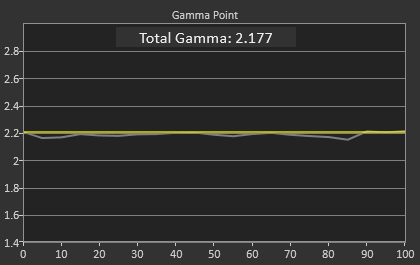
On the color side we see some improvement, but this is mostly due to the improvement in the grayscale. SpectraCal is going to improve CalMAN to remove White from the Gamut dE2000 number, to provide a more accurate data point on how much color error was improved in the future. The red primary is a little under-saturated and green is a little low in luminance, both errors that calibration can’t correct. The color gamut is good, but not excellent.
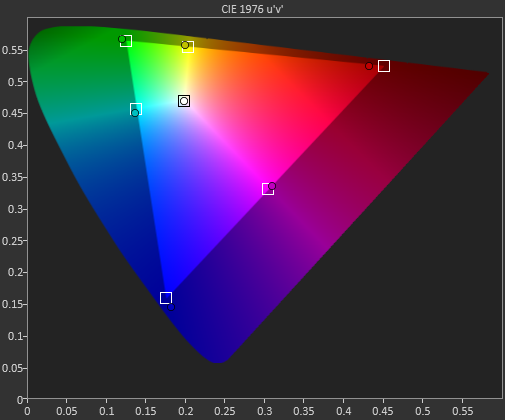
The Colorchecker data is better, but also not perfect here. The formerly high luminance has now been fixed, and luminance is nearly perfect. Those orange-yellow shades continue to cause issues however, with errors close to 3, and the same goes for a shade of blue that lies on the edge of the sRGB gamut. The numbers are much better than before but not as good as some other displays, especially on those orange-yellow colors.

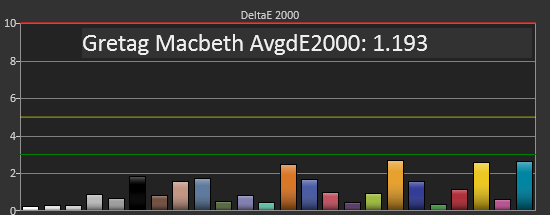

After calibration the saturations are almost worse at 100%, but better below that. Some people disagree on if it is better to have 100% saturation fixed or the values below that have a lower error, but overall the values are better than they were before calibration.
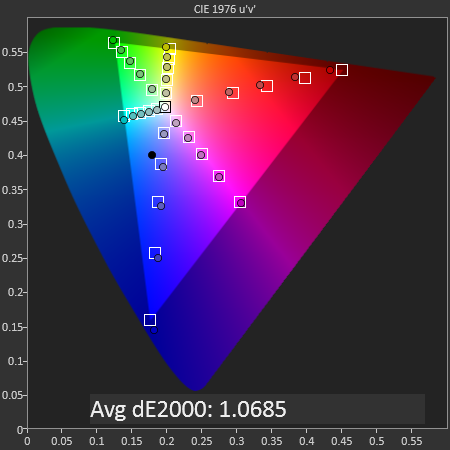
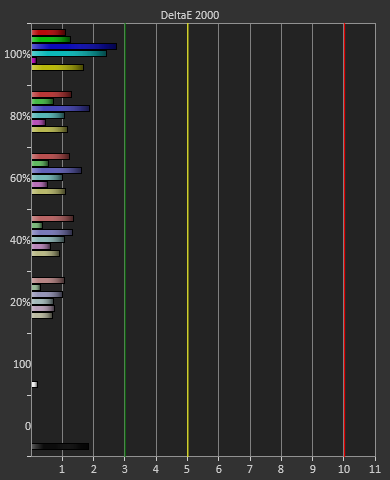
Post calibration, the BenQ is certainly better than it was before it. It is virtually perfect in the grayscale, but the gamut doesn’t improve that much as the issues it has are ones that calibration can’t fix, as calibration can’t add luminance or saturation that isn’t there to begin with. I was happy to see how much the BenQ improved, and you can do much better than the preset sRGB mode.


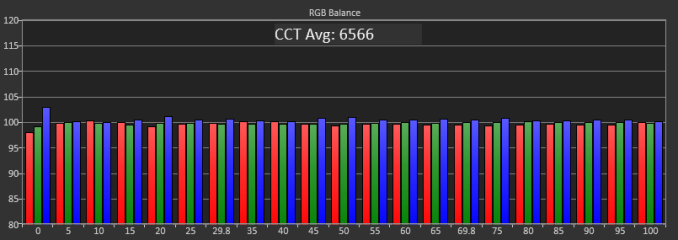
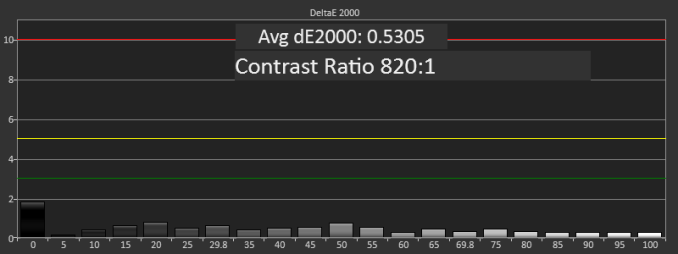










79 Comments
View All Comments
mdrejhon - Tuesday, June 18, 2013 - link
The XL2720T has better color quality than the VG248QE.Someone owns both monitors, and reported this.
The VG278H is actually pretty competitive to the XL2720T, despite its age.
What makes them really worth it, is the LightBoost.
Death666Angel - Tuesday, June 18, 2013 - link
Wow, this review badly needs a table of the specs on the first page.brandonicus - Tuesday, June 18, 2013 - link
I hate to be "that guy" but I found it really annoying you assumed we knew what the resolution was... unless I'm blind the only place it was mentioned was in the "Posted in" header and the seventh and eighth page. I feel like something that important should be mentioned upfront.blackoctagon - Tuesday, June 18, 2013 - link
Thanks for the review, Chris, but WHY exactly did you choose to measure input lag using the Leo Bodnar test? Apart from the fact that it cannot measure the screen's performance at 120Hz (the refresh rate at which this screen is designed to be played), the test itself seems to not have undergone the same verification as, say, PRAD.de's use of an oscilloscope has...for a review that starts out with a discussion about input lag, and even mentions that you were "still in search of" the ideal test, I expected to hear your reasoning for choosing this methodology over others.cheinonen - Tuesday, June 18, 2013 - link
I actually talked to TFT Central about this, as they have an oscilloscope method as well (which is beyond my means, unfortunately). They've tested multiple ways and feel the Leo Bodnar winds up as the most accurate version out there right now as well, other than a scope method. SMTT was working relatively well, but it has a license, and he stopped selling them. Our license expired, so I can't use it anymore.Searching for a totally accurate, and affordable, lag measurement device continues. I'll look into the Audrino solution that was mentioned here and see how that looks.
blackoctagon - Wednesday, June 19, 2013 - link
Thank you for the reply. Looking forward to seeing where this search leads youmdrejhon - Wednesday, June 19, 2013 - link
I'm the inventor of the Arduino Input Lag Tester, which runs via a USB cable connected to the computer.It features:
- Sub-millisecond accuracy
- Works at all computer resolutions and refresh rates.
- USB cable latency compensation (subtracts calculated USB cable latency)
- Costs only $40 to build.
It's currently undergoing beta testing, with custom software I have created.
Contact me at mark[at]blurbusters.com for more information about the Arudino Input Lag Tester.
blackoctagon - Thursday, June 20, 2013 - link
Interesting. But is it 'Audrino,' 'Arduino' or 'Arudino' test? :)I see all three (mis-?)spellings on this page
mdrejhon - Thursday, June 20, 2013 - link
Apologies. It's a hard word sometimes.The correct spelling is Arduino, which refers to an easy-to-program hobbyist microcontroller:
http://www.arduino.cc/
It's a home made input lag meter involving (1) Almost any Arduino with a USB port, (2) a photodiode, (3) a resistor, and (4) some wires. It's an open source input lag circuit I've developed that is very easy to build (easier than building a computer -- no soldering iron required!). I'll be publishing some software that makes everything run as an accurate input lag tester (including USB cable latency/jitter compensation), since the assembly is connected to a PC displaying flashing squares.
Pastuch - Tuesday, June 18, 2013 - link
Honestly, this review is a huge let down. When I started reading this website 10 years ago the articles were always informed and well researched. This review is sorely lacking in that regard. The only reason people are still buying 120hz displays is for Lightboost capable 2d gaming. The CS, BF and Quake communities LOVE the CRT like motion response of Lightboost and this is one of the better models to have that capability. http://www.blurbusters.com/ has all the relevant info, Mark is an invaluable resource and I implore you to contact him for more info.You complain loudly about IPS color quality in a gaming review but you admit yourself that gaming isn't a hobby you’re interested in. Your conclusion argues that the money could be better spent on an IPS 2560 display. Do you know how many video cards it takes to run Planetside 2 at 2560 at 80FPS+? You need two Geforce 780s! Can I borrow $1200?
I used to own a 2560x1440 IPS for desktop work but I couldn’t play CS on it due to slow pixel response and horrible input lag. Once you try lightboost there is no going back. The motion clarity at 120fps + on a LB capable display genuinely changes the gameplay experience. I don't own a LB display yet but I've tried it at a lan party. I was blown away and I was hoping that Anand would provide a comprehensive review of the Benq 2720T. With the latest Nvidia drivers and LB enabled, gamers are reporting almost 1000 contrast ratio on the 2720 which is better than any other LB monitor. Lightboost is a genuine boon to the gaming market, there are Sony FW900 owners that say the motion clarity of LB is BETTER than the FW900. Do you have any idea how amazing that is? People have been waiting 10 years for a monitor that can replace the FW900 for twitch-gaming.
If you want to read solid monitor reviews go to http://www.tftcentral.co.uk/